2012 Ford Mustang Boss 302 Review
Ford has done an admirable job of building cars that can appeal to buyers of the Hyundai Sonata and the Toyota Corolla, while also infusing them with the divine spark that is present in fun-to-drive cars, the one characteristic that elevates them from being merely as good as the rest of the pack, to truly great. Cars like the Fiesta and Focus can be filed under that category, and have the added bonus of 40-mpg capability.
FAST FACTS
| 1. Powering the Boss 302 is a modified version of Ford’s 5.0L V8 making 440-hp and 390 lb-ft of torque. |
| 2. Look for a 0-60 time in the mid to low four second range; even lower when using launch control. |
| 3. Adjustable shocks and 4-piston front Brembo calipers with 14-inch rotors come standard, although you’ll have to pay $1,950 extra for the Recaro seats and LSD. |
| 4. Optional for the boss 302 is a $6,995 Laguna Seca package with a new front splitter, rear spoiler, rear seat delete and rear chassis brace to cut a tenth of a second to 60 mph, drop braking distances and shed a second or two per lap at the track. |
| 5. The Boss 302 is priced from $40,310. |
For those with a bit more disposable income and less of a social conscience, Ford has something to offer in the form of the Mustang. Hell, even the base model V6 puts down 307 horsepower and is capable of over 30-mpg on the highway, but let’s be real here – the V6 Mustang suffers from the paralyzing stigma of being a girl’s car. Like the Mazda MX-5, you can advocate for its competency for as long as you want, but most humans with an XY chromosome won’t buy your logic.
WATCH OUT SHELBY
I was lucky to drive the Ford Shelby GT500 last fall, the top dog, 550 horsepower Mustang with a supercharged V8, Brembo brakes and a bright red paintjob with white racing stripes. It was brilliant, and I pronounced it the last great muscle car. I was wrong. Ford still had something up its sleeve.
While the big dogs of automotive journalism got to spend extended time with the Boss on various race tracks (including Laguna Seca) I was limited to one day – less than 24 hours in reality – and decided to guzzle down a succession of 5-Hour Energy beverages and drive as long as possible before the car had to be returned.
The Mustang Boss 302 is actually down 110 horsepower and 130 lb-ft of torque from the Shelby, by nature of its 5.0L V8, which displaces a mere 440 horsepower and 380 lb-ft of torque (the 5.0 V8 model uses a similar engine, but with different internals that restrict it to 412 horsepower and 390 lb-ft of torque). For number’s geeks with little experience behind the wheel, the deficit between the Boss and the Shelby is appalling, but in the real world, the 302 is much better to drive.
The weight difference between the two is not drastic, with the Boss weighing 189 lbs less than the Shelby, but the way that power is put down makes the Boss much more appealing, with its smooth, steady climb up to a 7,500 rpm redline providing a glorious NASCAR-like soundtrack from inside the cabin (and, I was assured by some friends, a deafening roar from the outside).
The Shelby, saddled with 550 horsepower and 510 lb-ft of torque, has trouble actually putting the power down to the ground – hit the gas in third, and the rear end bucks from side to side like a drunken spring break reveler as the car scrambles for traction. With the Boss, there’s comparatively little drama, the short 3.73 rear end making for wickedly fast acceleration to 60 mph, while the optional limited slip differential keeps the traction. The Boss 302’s 6-speed manual is also much better to operate that the Shelby’s, which requires a good deal of effort.
STRIPPED-DOWN INTERIOR, AND NOT IN A GOOD WAY
Where the Shelby does win out is inside, where it gets a full suite of Ford features like a touch-screen navigation system with SYNC, a Shaker 1000 stereo, leather trim and less black grainy plastic. The Boss 302 is very Spartan, something we can live with, but might be off-putting to those who can actually afford this car. The optional Recaro seats deserve mention for being both comfortable and extremely supportive, and come with holes for shoulder harnesses, although using them with a non-fixed back seat seems like a poor idea. They’re a $1,995 option and come paired with a limited slip differential. That’s not a bad price, but on a vehicle like this an LSD really should be standard.
The stereo is a real piece of crap that wouldn’t be fit for a base Fiesta, and let’s be honest here – a great deal of the whole muscle car experience is blasting loud music while cruising the main drag. Would it kill Ford to put something half-decent in a car that costs more than $40,000?
The exterior, however, is the exact opposite of the de-contended cockpit. Up front there’s a whole new grille and fascia with an integrated splitter. Out back are two absolutely massive rear exhaust pipes. Plus, the Boss 302 gets the GT’s power dome hood and rear decklid spoiler and when paired with the custom graphics and wheels looks 100 percent the track machine that it is.
A TRACK CAR YOU CAN LIVE WITH
That detail aside, the Boss is astonishingly easy to live with in every-day situations. The trunk is fairly spacious, the ride quality is excellent except over the worst pavement (where it really does fall apart, though we did have the adjustable shocks cranked up the full stiffness), the seats are comfortable and the clutch is easy to use. Driving it in urban rush hour traffic left us no more exhausted than driving a family sedan, though its physical heft and less than optimal rear visibility made lane changes and shoulder-checking a bit more complicated than it would be in a Taurus.
Another nice feature if you do want to drive your Boss every day is the adjustable steering settings, with Comfort, Normal and Sport mode for different assist settings. We could see using the lower two for a highway cruise, but anyone with a Boss personality is going to want to stick it in Sport and keep it that way.
THE VERDICT
Given the hype that tends to surround any muscle car, managing expectations is key for a car like the Boss 302. The new Camaro debuted with all the praises and hallelujahs the automotive press could muster, but it turned out to be a dud, while the Challenger was a neat but dynamically flawed vehicle. The Boss 302 manages to deliver on its promises, a more focused, refined Mustang that transcends the typical “weekend toy” status that most high-performance cars (let alone track day special editions) tend to be.
It’s a shame that the time spent with the Boss was so limited, barely allowing for time to dig into the supposed handling prowess of the chassis, the 4-piston Brembo brakes (which worked very well during a triple digit panic stop) and the chance to wind out the big 5.0L V8 on the track, letting us explore all 7500 rpm. We’ll be eagerly awaiting a proper week-long drive with the Boss, but for now it’s safe to say that the Boss is the real deal, the apex muscle car that can also give foreign rivals reason to stay awake at night.
RELATED READING
2011 Ford Shelby GT500 Review
2010 Chevrolet Camaro SS Review
2011 Dodge Challenger Review
2011 Mazda 2 Review
LOVE IT
- NASCAR soundtrack
- A more complete performance package than the Shelby GT500
- Useable in everyday situations
LEAVE IT
- Interior is basic
- Limited production
- Stereo quality comparable to an 80's Walkman
More by Derek Kreindler

















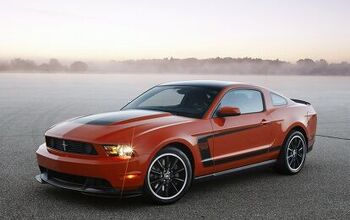
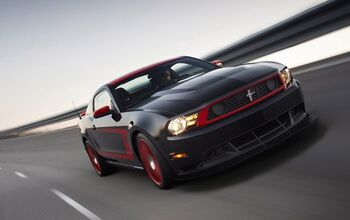

![2011 Nissan 370Z NISMO Review [Video]](https://cdn-fastly.autoguide.com/media/2023/06/26/06123/2011-nissan-370z-nismo-review-video.jpg?size=350x220)
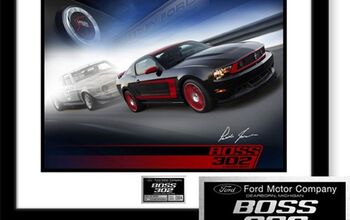

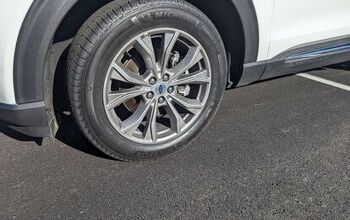



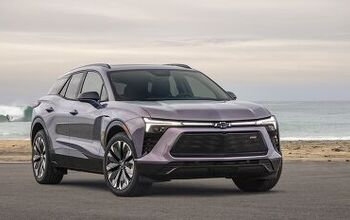
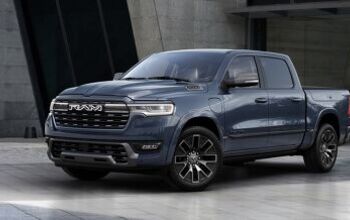

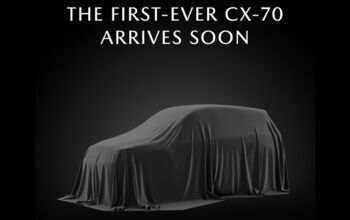

Comments
Join the conversation